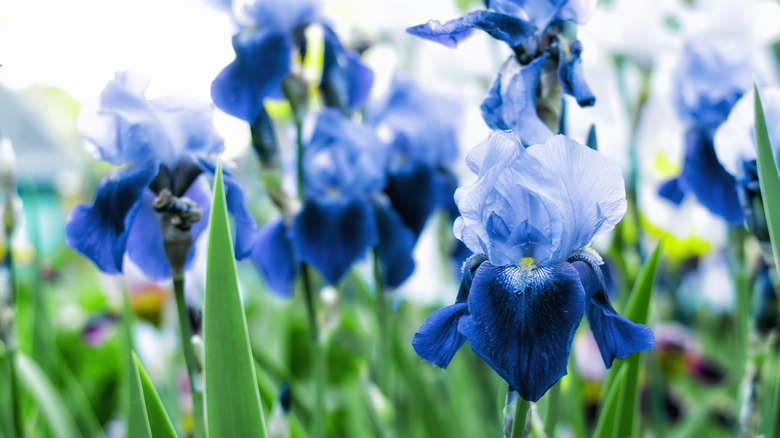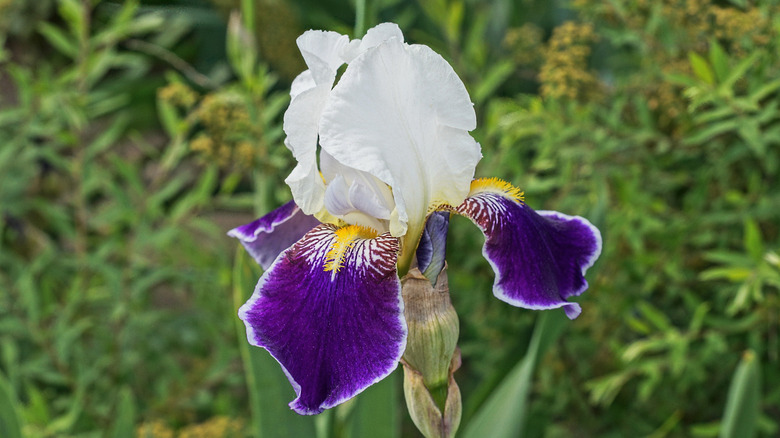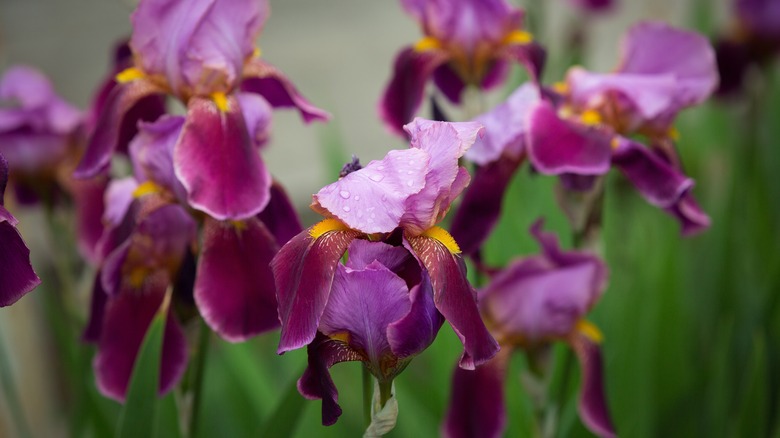When Should You Plant Iris Bulbs In Your Garden?
Did you know there are approximately 280 species worldwide in the genus iris? The United States alone accounts for 10% of that count, with 28 different species native to the U.S. states, per the U.S. Forest Service.
A genus of nearly 300 varieties means these blooming plants come in a veritable kaleidoscope of colors. And with all that vivid flowering going on, it's no surprise they share the name of Iris, the Greek goddess of the rainbow. In addition to offering color variety, irises also come in many different shapes and sizes. Essentially, there's an iris perfect for most every garden.
Another interesting fact about irises is that though they grow from rhizomes, they're often referenced as bulbs. They're also perennials, which means they bloom year after year. They'll also multiply with proper care, offering your garden more and more colorful flowers each growing season. But to get this colorful growing cycle started, when exactly should you plant your iris bulbs?
The best time to plant irises
Irises are hardy plants so they grow well throughout most of the U.S. Even so, there's a proper time to get your iris bulbs in the ground to ensure a beautiful crop of flowers.
Irises need to be snugly in their beds and established before winter arrives. This means planting during the late summer to early fall to yield blooms the following spring and summer, according to Clemson Cooperative Extension. The exact time can vary from area to area, but July through September is a good rule of thumb.
More specifically, planting should take place when overnight temperatures are still between 40 degrees and 50 degrees Fahrenheit in your area for the best results. That might mean postponing sowing your rhizomes another month to October in warmer climates. Just make sure you plant your fall bulbs for spring blooms well before winter sets in no matter where you live.
More tips for iris planting and care
Firstly, irises love the sun. Taking in from six to eight hours of sun each day keeps them quite happy and encourages beautiful iris blooms. As for soil, a rookie mistake many people make, per Clemson Cooperative Extension, is burying their iris bulbs too deeply. These plants like shallow soil, so leaving a little bit of the top showing to bask in the sunlight is preferable.
The main exceptions occur in very hot and very cold climates. In super-hot locales, the bulbs can use a bit of soil to shield them from harsh summer rays. In areas that get quite cold, you might need to mulch over them before the hard winter sets in and then rake the mulch away in the spring.
Also, remember that irises can't endure standing water at all. Planting them in a spot with adequate drainage is imperative. Unless your soil is depleted of nutrients, fertilizing isn't necessary until after your irises bloom. That's when the soil might need a little boost.
With some love and care, you'll have gorgeous irises in your garden year after year — after planting them at the right time of the year.


